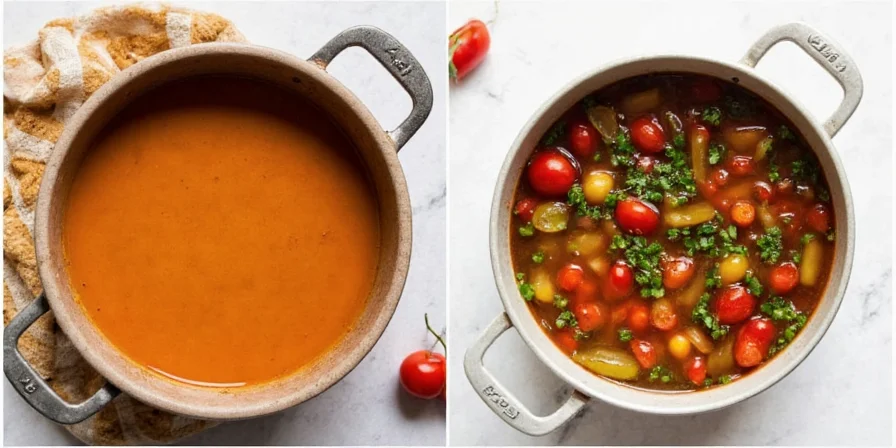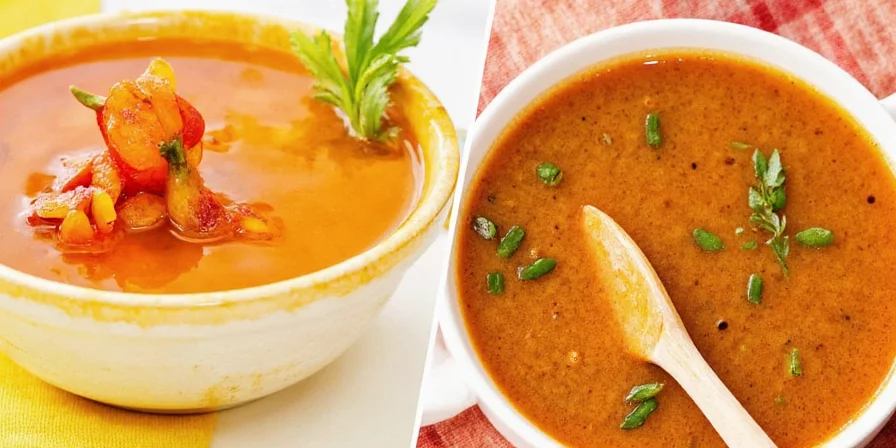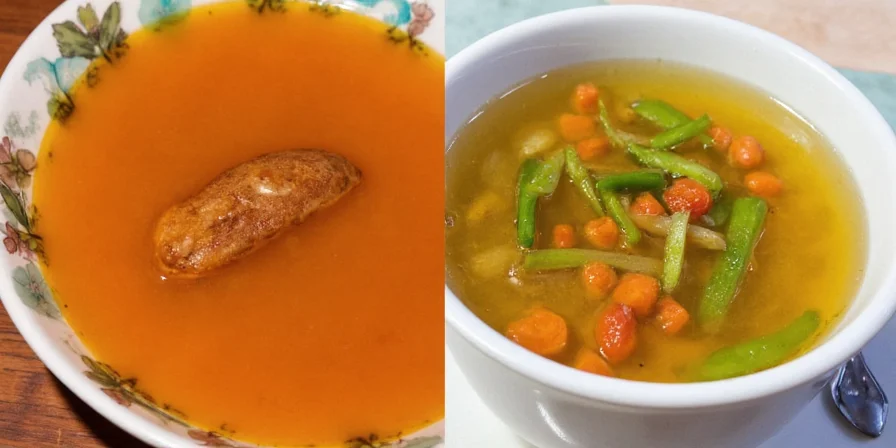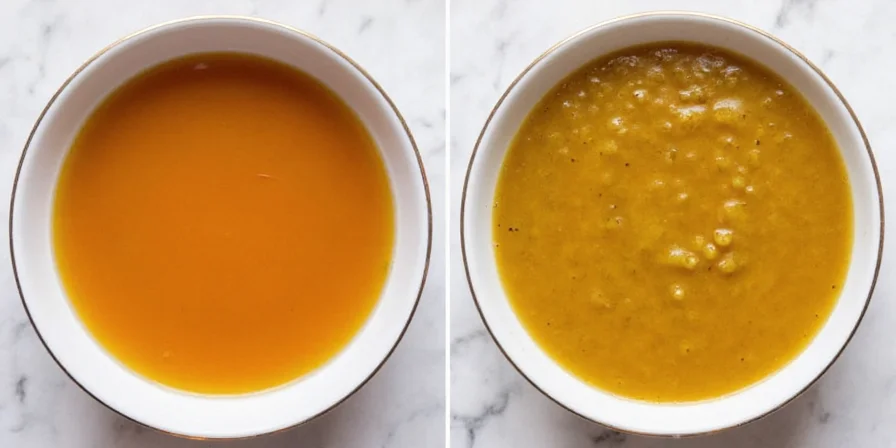Vegetable broth and stock differ primarily in preparation method and salt content. Broth is made from whole vegetables with added seasonings and is typically pre-salted, ready to use in finished dishes. Stock uses vegetable scraps with minimal seasoning and remains unsalted, serving as a neutral base for complex recipes. This simple distinction determines which liquid works best for soups, sauces, and other dishes.
Table of Contents
- Broth vs. Stock: Quick Reference
- When to Use Each (Simple Guide)
- How to Make Both at Home
- Storage Tips That Actually Work
- Top 5 Mistakes Home Cooks Make
- FAQs Answered by Cooking Experts
Broth vs. Stock: Quick Reference
| Feature | Vegetable Broth | Vegetable Stock |
|---|---|---|
| What's Used | Whole vegetables + herbs/seasonings | Veggie trimmings (peels, ends, stems) |
| Cooking Time | 30–60 minutes | 45–90 minutes |
| Salt Level | Pre-salted (400–800mg/cup) | Unsalted (perfect for recipe control) |
| Best For | Quick soups, finished sauces | Risottos, braises, complex dishes |
Broth works like a ready-made flavor boost you'd buy at the store, while stock is your customizable kitchen foundation. This explains why substituting one for the other often leads to oversalted or bland results.

When to Use Each (Simple Guide)
Stop guessing which liquid belongs in your recipe. Follow these foolproof rules:
- Use broth when:
- Preparing quick weeknight soups (simply heat and serve)
- Adding instant flavor to pan sauces or gravies
- Replacing water in boxed rice or grain mixes
- Use stock when:
- Cooking risotto or pilaf (for neutral flavor foundation)
- Braising vegetables or meats (to avoid oversalting)
- Maximizing kitchen scraps (zero-waste cooking)

How to Make Both at Home
30-Minute Vegetable Broth (No Waste Required)
- Chop 2 carrots, 1 onion, 2 celery stalks into large chunks
- Add to 8 cups water with 2 garlic cloves and 1 bay leaf
- Simmer 30 minutes, then strain (add salt only at the end)
- For richer flavor: Stir in 1 tbsp tomato paste during last 10 minutes
Freezer-Friendly Vegetable Stock (Scrap Cooking)
- Collect scraps in freezer: onion skins, carrot tops, herb stems
- Avoid bitter scraps: cabbage, broccoli, or zucchini ends
- Add to 8 cups water with 1 tsp apple cider vinegar
- Simmer gently 60 minutes, then strain through cheesecloth

Storage Tips That Actually Work
- Refrigerator: Keep up to 4 days in airtight containers (discard if cloudy or sour)
- Freezer: Pour into ice cube trays, freeze, then transfer to labeled bags (use within 4 months)
- Space-Saver: Reduce liquid by half on stove for concentrated flavor cubes
- Quick Thaw: Place frozen cubes in recipe during last 5 minutes of cooking
Top 5 Mistakes Home Cooks Make
- Using broth in risotto: Results in oversalted dish—always use unsalted stock for rice dishes
- Boiling instead of simmering: Causes bitter flavors and cloudy appearance
- Adding salt too early: Draw out moisture and intensify bitterness
- Using the wrong scraps: Potato peels and brassicas (cabbage/broccoli) create unpleasant flavors
- Storing in large containers: Wastes space and forces thawing more than needed
FAQs Answered by Cooking Experts
Can I use broth instead of stock in recipes?
Yes, but reduce added salt by 50% since broth contains pre-added sodium. For risotto or braises, dilute broth with equal parts water to create a stock-like base.
Why does my homemade stock taste bitter?
Bitterness comes from overcooked potato skins or brassica vegetables like cabbage. Simmer no longer than 90 minutes and avoid these scraps. Add 1 tsp apple cider vinegar to balance flavors.
How do I fix over-salted broth?
Dilute with water or unsalted stock (1:1 ratio). Add raw potato chunks while reheating—they absorb excess salt. Finish with 1 tsp lemon juice to balance the saltiness.
Can I use store-bought broth for stock?
Yes, but choose low-sodium versions. For best results, simmer store-bought broth for 20 minutes with extra vegetable scraps to create a more neutral stock-like flavor.
Which is better for weight loss?
Both contain similar calories (15-30 per cup). Stock gives you more control over sodium, which helps reduce water retention. Use either as base for vegetable-rich soups to boost volume and nutrition.
Understanding these simple distinctions between vegetable broth and stock eliminates common cooking frustrations. By matching the right liquid to your recipe and avoiding the top mistakes home cooks make, you'll consistently achieve better flavor control and reduce kitchen waste. Start implementing these practical techniques today for noticeably improved results in soups, sauces, and grain dishes.











 浙公网安备
33010002000092号
浙公网安备
33010002000092号 浙B2-20120091-4
浙B2-20120091-4